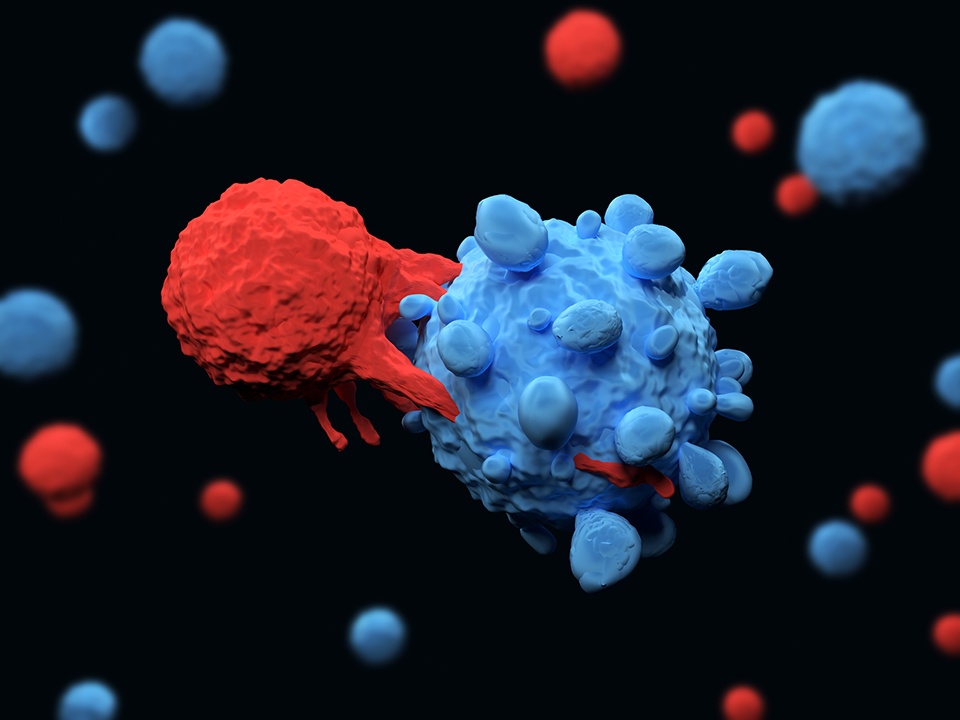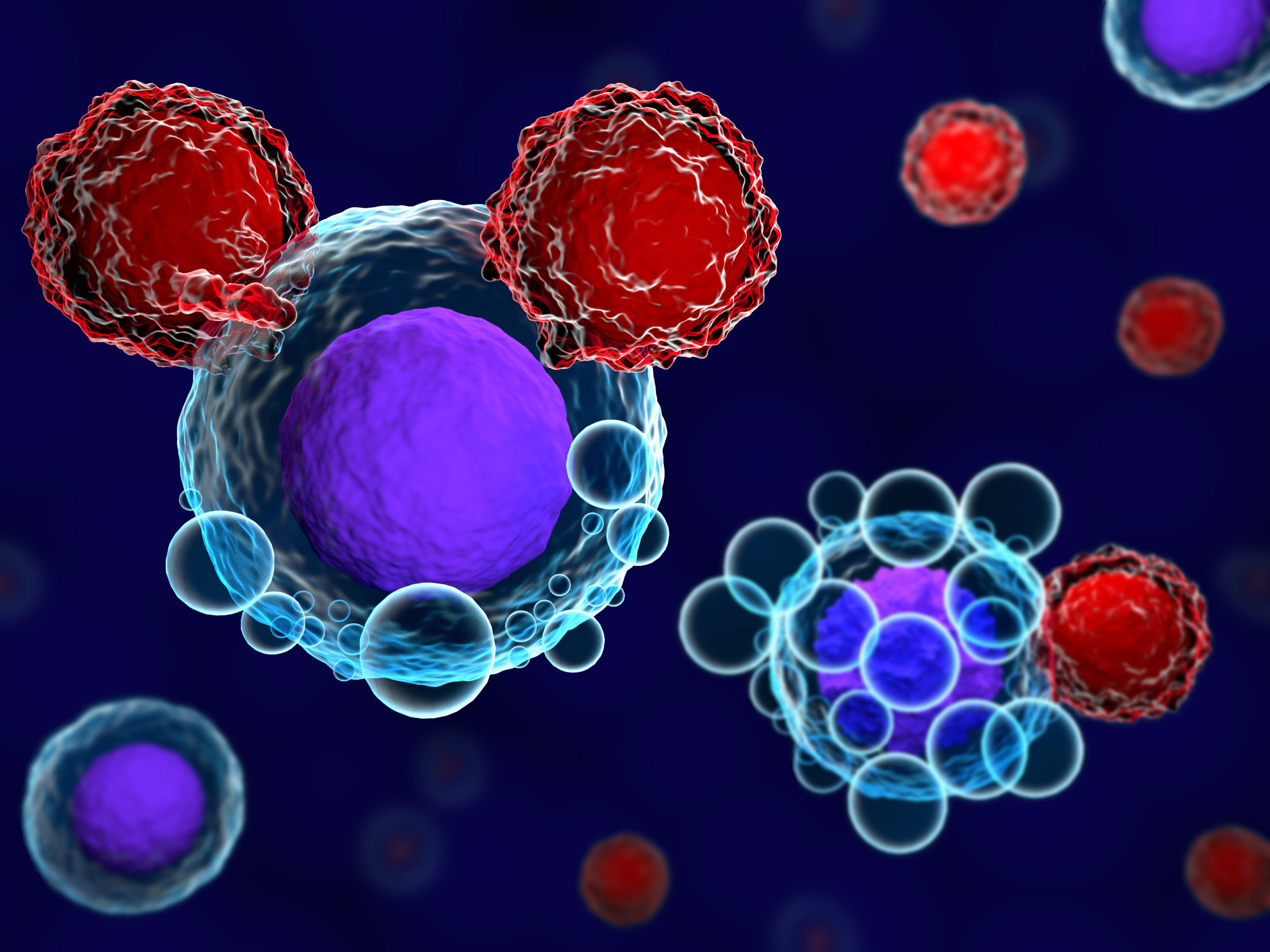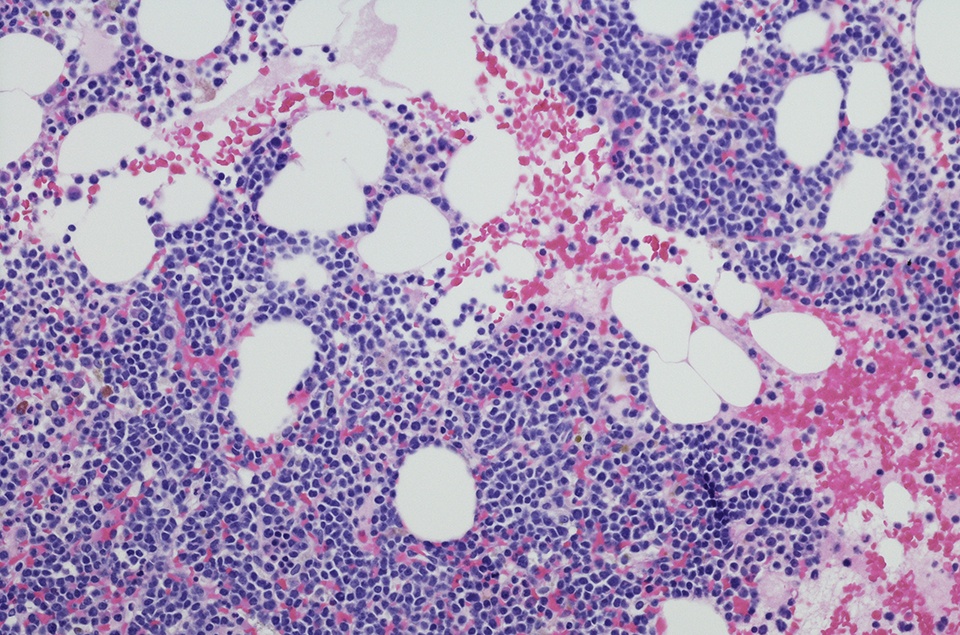
At more than three years of follow-up, most patients with chronic lymphocytic leukemia (CLL) who were treated with a combination of ibrutinib plus standard chemoimmunotherapy of fludarabine, cyclophosphamide, and rituximab (FCR) experienced sustained, durable responses. The benefits of this time-limited therapy approach were seen regardless of IGHV status. Matthew S. Davids, MD, from Dana-Farber Cancer Institute, presented these findings at the 2021 ASH Annual Meeting.
The authors explained that, given the excellent efficacy and tolerability of ibrutinib in a broad population of young, fit patients with CLL patients, they sought to evaluate whether time-limited ibrutinib plus chemoimmunotherapy could provide durable remission for CLL patients, irrespective of IGHV status.
In this multicenter, single-arm, phase II trial, investigators enrolled CLL patients age ≤65 years without restriction by IGHV mutation status, who met iwCLL treatment criteria. Ibrutinib 420 mg daily was given for seven days, then combined with FCR for up to six cycles. Responders continued on ibrutinib maintenance, and patients with undetectable measurable residual disease (MRD) after two years of maintenance discontinued therapy. The study’s primary objective was to determine the rate of complete response (CR)/CR with incomplete hematologic recovery (CRi) with undetectable MRD two months after ibrutinib plus FCR. Secondary objectives were to assess response rates, progression-free survival (PFS) and overall survival (OS), as well as MRD negativity after two years of ibrutinib maintenance.
A total of 85 patients were enrolled at nine U.S. cites. The median age was 55 years (range = 38-65), and IGHV was unmutated in 46 of 79 evaluable patients (58.2%). del17p and TP53 mutation were present in 4 of 83 (4.8%) and 3 of 81 (3.7%) patients, respectively. The median number of FCR cycles completed was six (range = 1-6).
Dr. Davids presented data from a median follow-up of 40.3 months (range = 3.1-76), at which point the median number of ibrutinib maintenance cycles was 24 (range = 0-81). The rate of CR with undetectable MRD at any point on study is 55%, and the rate of undetectable MRD in any response was 84%. Following two years of ibrutinib maintenance, the rates of CR/CRi and undetectable MRD in patients with available data were 77% and 81%, respectively, with no differences based on IGHV status.
PFS and OS for all patients were 97% and 99%, respectively. The researchers noted that 13 of 61 patients (21.3%) who completed ibrutinib FCR and started ibrutinib maintenance while in MRD negativity have had recurrent MRD. Seven of these patients underwent retreatment with ibrutinib monotherapy (5 due to clinical progression and 2 due to recurrent MRD without clinical progression), and all seven achieved PR with retreatment.
The most common treatment-emergent grade 3/4 adverse events were hematologic, including neutropenia (40%), thrombocytopenia (32%), and anemia (11%).
Regarding these findings, Dr. Davids and coauthors concluded that, “among the few patients with recurrence after this time-limited therapy, all have responded to retreatment with ibrutinib monotherapy.” The data suggest that “iFCR is worthy of exploring in comparative studies in younger, fit CLL patients who desire the possibility of functional cure with time-limited therapy.”







 © 2025 Mashup Media, LLC, a Formedics Property. All Rights Reserved.
© 2025 Mashup Media, LLC, a Formedics Property. All Rights Reserved.